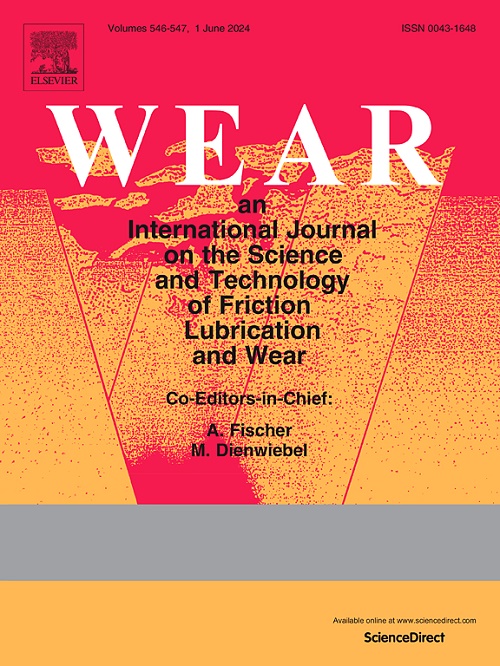A new correlation for estimating solid particle erosion in elbows
IF 5.3
1区 工程技术
Q1 ENGINEERING, MECHANICAL
引用次数: 0
Abstract
Throughout the Literature, solid particle erosion prediction models have been developed based on limited data without considering uncertainties involved in measurements. In this study, a new correlation is designed to estimate the maximum erosion rate caused by solid particles in standard elbow geometries. The novel development process of this correlation includes uncertainty estimation of erosion measurements. To estimate uncertainties in an erosion database, it is imperative to have a model that can be used to calculate accurate erosion values and provide reliable references. For this purpose, a database of repeated erosion measurements for gas-sand, low-pressure conditions collected by previous researchers is used. The database includes standard elbow geometries with 0.0762 m and 0.1016 m internal pipe diameter, and sand particles with mean diameters of 75 and 300 μm. Then, the erosion values in this database are adjusted to agree with the physical behaviors expected in the erosion process. Finally, based on the adjusted erosion values, a new correlation is developed that accounts for important parameters such as pipe and particle diameters, and gas velocity. The results and comparison of this new model with other correlations/models in the literature show that this correlation performs very well in predicting solid-particle erosion values for elbow geometry with an RMSE value of 7.96E-02 mm/kg. The effect of superficial liquid velocity is also investigated and modeled based on a database of gas-liquid-sand erosion, resulting in an updated version of the correlation for predicting erosion in gas-liquid-sand flow conditions. Furthermore, CFD results for higher-pressure fluids and larger pipe diameters of 0.1524 m and 0.2032 m and mean particle sizes of 25, 75, 150, and 300 μm, are used to further validate the correlation for larger pipe sizes and high-pressure fluid flows. In summary, three correlations have been developed in this research; one for low-pressure flows with application in uncertainty estimation, one for predicting erosion in two-phase flow conditions, and one for cases with larger pipe diameters or high-pressure fluids.
估算弯管中固体颗粒侵蚀的新相关性
纵观文献,固体颗粒侵蚀预测模型都是基于有限的数据开发的,没有考虑到测量中的不确定性。本研究设计了一种新的相关模型,用于估算固体颗粒在标准弯头几何形状中造成的最大侵蚀率。这种相关性的新型开发过程包括侵蚀测量的不确定性估算。要估算侵蚀数据库中的不确定性,必须建立一个模型,用于计算精确的侵蚀值并提供可靠的参考。为此,我们使用了以前的研究人员收集的气-砂、低压条件下的重复侵蚀测量数据库。该数据库包括内管直径分别为 0.0762 米和 0.1016 米的标准弯头几何形状,以及平均直径分别为 75 微米和 300 微米的沙粒。然后,对数据库中的侵蚀值进行调整,使其符合侵蚀过程中的预期物理行为。最后,根据调整后的侵蚀值,建立了一个新的相关模型,该模型考虑了管道和颗粒直径以及气体速度等重要参数。结果以及该新模型与文献中其他相关性/模型的比较表明,该相关性在预测弯头几何形状的固体颗粒侵蚀值方面表现非常出色,均方根误差值为 7.96E-02 mm/kg。此外,还根据气液砂侵蚀数据库研究了表层液体速度的影响并建立了模型,从而得到了用于预测气液砂流动条件下侵蚀情况的相关性更新版本。此外,针对更高压流体和更大管道直径(0.1524 米和 0.2032 米)以及平均粒径(25、75、150 和 300 微米)的 CFD 结果,也进一步验证了针对更大管道尺寸和高压流体流的相关性。总之,本研究开发了三种相关性:一种适用于低压流,可用于不确定性估计;一种适用于预测两相流条件下的侵蚀;一种适用于管道直径较大或高压流体的情况。
本文章由计算机程序翻译,如有差异,请以英文原文为准。
求助全文
约1分钟内获得全文
求助全文
来源期刊

Wear
工程技术-材料科学:综合
CiteScore
8.80
自引率
8.00%
发文量
280
审稿时长
47 days
期刊介绍:
Wear journal is dedicated to the advancement of basic and applied knowledge concerning the nature of wear of materials. Broadly, topics of interest range from development of fundamental understanding of the mechanisms of wear to innovative solutions to practical engineering problems. Authors of experimental studies are expected to comment on the repeatability of the data, and whenever possible, conduct multiple measurements under similar testing conditions. Further, Wear embraces the highest standards of professional ethics, and the detection of matching content, either in written or graphical form, from other publications by the current authors or by others, may result in rejection.
 求助内容:
求助内容: 应助结果提醒方式:
应助结果提醒方式:


